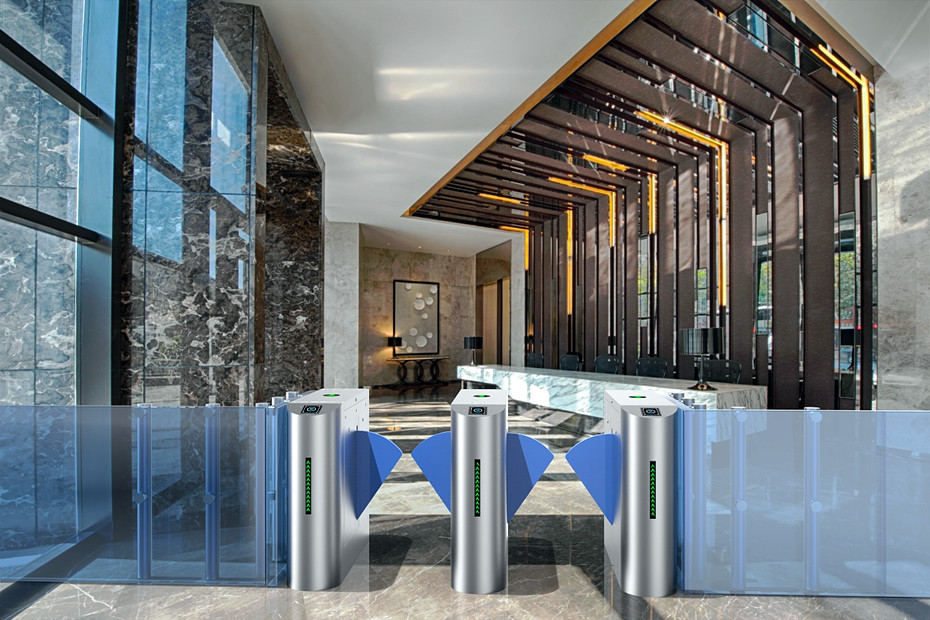In today’s regulatory landscape, compliance with access control requirements is a top priority for organizations across various industries. Flap barrier turnstiles have emerged as instrumental tools for ensuring access control compliance. This article explores the critical role of Flap barrier turnstiles in meeting regulatory requirements and maintaining a secure environment.
1. Regulating Access to Sensitive Areas:
Regulatory requirements often mandate that organizations control access to sensitive areas, such as data centers, laboratories, or restricted zones. Flap barrier turnstiles act as a physical barrier, restricting entry only to authorized individuals. By integrating authentication methods such as access cards or biometric identification, Flap barrier turnstiles ensure compliance with regulations pertaining to access control, safeguarding sensitive areas from unauthorized access.
2. Enforcing Two-Factor Authentication:
Many regulatory frameworks mandate the use of two-factor authentication for enhanced security. Flap barrier turnstile provide a convenient and effective way to implement this requirement. By combining something the user possesses, like an access card, with something the user is, like biometric data, Flap barrier turnstiles enforce rigorous authentication protocols. This integration ensures compliance with regulations that require organizations to utilize multi-factor authentication measures for access control.
3. Audit Trails and Reporting:
Flap barrier turnstile equipped with advanced access control systems can generate detailed audit trails and reports. Compliance regulations often necessitate the maintenance of comprehensive records to track access to secure areas. These audit trails capture information such as date, time, and identity of individuals passing through the barriers. This documentation ensures compliance with regulatory requirements and supports investigations, if necessary, by providing a comprehensive overview of access events.
4. Monitoring and Preventing Tailgating:
Tailgating, the unauthorized entry of an individual following an authorized person, poses a significant risk to access control compliance. Flap barrier turnstiles play a crucial role in preventing tailgating by allowing only one person to pass through at a time, effectively reducing the risk of unauthorized access. The sensors within these barriers detect tailgating attempts, triggering alarms or denying entry to multiple individuals, thereby ensuring regulatory compliance in preventing unauthorized access.
5. Compliance with Privacy Regulations:
In many industries, compliance with privacy regulations is paramount. Flap barrier turnstiles, when integrated with privacy-enhancing technologies, can help organizations meet these requirements. For instance, facial recognition technology can be used to verify individuals without storing or transmitting facial images, thus ensuring compliance with privacy regulations governing the handling of personal data. By implementing privacy-focused methodologies, organizations can align their access control systems with the necessary regulatory standards.
6. Integration with Visitor Management Systems:
Organizations are often required to monitor and control the access of visitors. Flap barrier turnstiles can be seamlessly integrated with visitor management systems to facilitate compliance with these requirements. Visitors can be issued time-limited access cards or badges that are validated by the Flap barrier turnstiles, granting them controlled access based on their authorized timeframe. This integration ensures regulatory compliance by effectively managing and monitoring visitor access to secure areas.
7. Regular Compliance Audits and System Testing:
To maintain access control compliance, organizations must conduct regular audits and system testing. Flap barrier turnstiles play a crucial role in this process by providing a physical representation of access control measures. During compliance audits, the functionality of the Flap barrier turnstiles can be evaluated, ensuring they meet regulatory requirements. Additionally, ongoing system testing helps identify any vulnerabilities or weaknesses in the access control infrastructure, enabling organizations to address them promptly to maintain compliance.
Conclusion:
Flap barrier turnstiles are integral components in meeting access control compliance requirements. By regulating access to sensitive areas, enforcing two-factor authentication, generating audit trails, and preventing tailgating, Flap barrier turnstiles contribute to creating a secure environment while meeting regulatory standards. Integrations with visitor management systems and privacy-enhancing technologies further strengthen compliance efforts. Regular compliance audits and system testing ensure long-term adherence to regulatory requirements. By leveraging the role of Flap barrier turnstiles, organizations can establish a robust access control infrastructure that aligns with industry-specific regulations and safeguards against unauthorized access.



